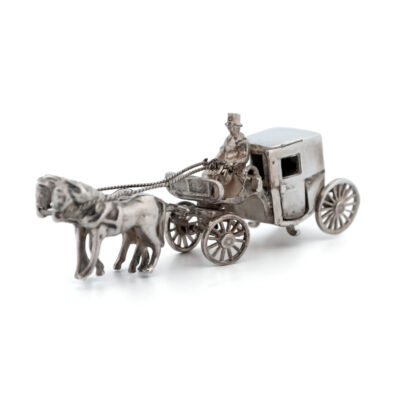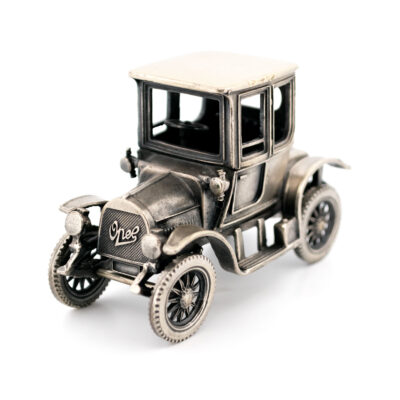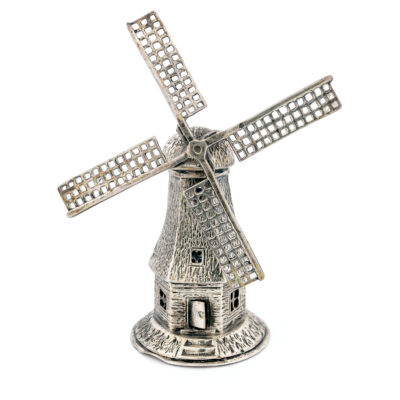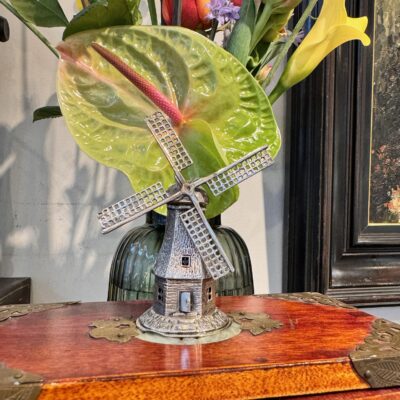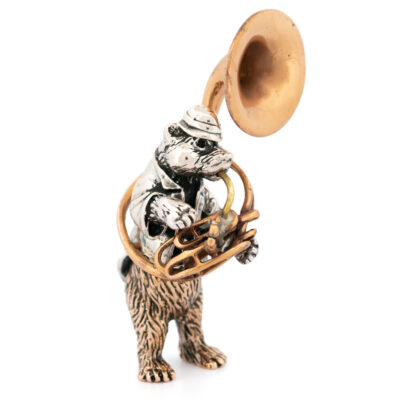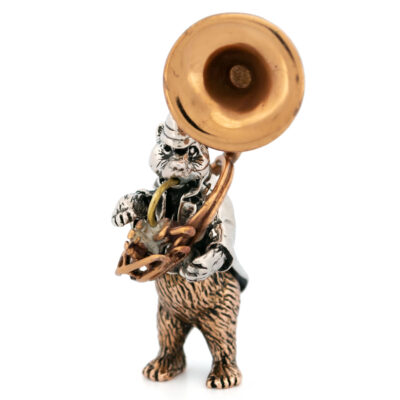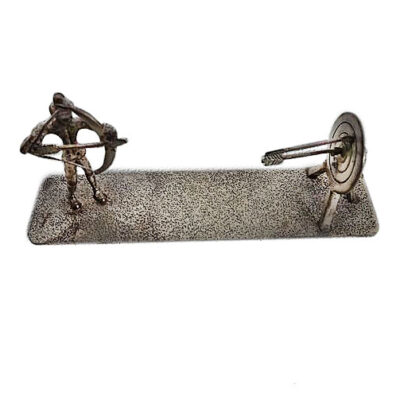This finely detailed miniature, crafted by J. Niekerk in Schoonhoven, Netherlands, depicts an elderly man seated on a rocking chair. Made between 1970-1980, it’s a beautiful 50th birthday (Abraham) tribute, featuring hallmarks of sword 835 and the maker’s mark. A charming piece of Dutch craftsmanship.
Videos
Details: Silver Miniature.
Design Era: Mid 20th Century (1950-1970).
Dimensions: Height 4cm.
Weight in grams: 29.
Condition: Very good condition – slightly used with small signs of wear.
Shipping and Pickup: This classic piece ships from our store located in the center of Amsterdam, The Netherlands. We offer both registered shipping and local pickup at our store. In the case of local pickup, any applicable shipping costs will be refunded.
About Us: Add some sparkle to your style with Binenbaum.com. We offer a stunning selection of antique and vintage jewelry that you won’t find anywhere else. From timeless rings and dazzling necklaces to unique brooches, we have something for every taste and occasion. Visit our website today and treat yourself to a piece of history.
| Design Era | |
|---|---|
| Design & Historical Context | The 1950s were a time of great cultural and technological change, marked by the emergence of rock 'n' roll, the birth of the "Beat" Generation, the launch of Sputnik, and the beginning of the space race. These events, and the knowledge that the world was living in a nuclear age, contributed to the development of an aesthetic known as the "Atomic Age," which was reflected in various aspects of design, including jewelry. |
| Materials & Craftsmanship | Silver: The Metal of Elegance and Versatility Silver, known for its bright, reflective luster, is one of the most beloved and widely used precious metals in the world. This versatile metal has been cherished for thousands of years, not only for its beauty but also for its malleability, making it ideal for crafting intricate and delicate jewelry designs. Historically, silver has been associated with the moon and considered a symbol of purity, clarity, and protection. Ancient civilizations, from the Egyptians to the Greeks and Romans, valued silver for its beauty and used it to create coins, jewelry, and religious artifacts. In many cultures, silver is also believed to have healing properties, often used in amulets and talismans to ward off negative energy. In modern jewelry, silver is prized for its affordability, versatility, and timeless appeal. Sterling silver, an alloy of 92.5% pure silver and 7.5% other metals (usually copper), is the standard used in high-quality jewelry. Its durability and bright, reflective surface make it an excellent choice for a wide range of designs, from minimalist pieces to ornate creations. Silver can be polished to a high shine or given a matte, oxidized, or antiqued finish to suit various styles. Silver is more than just a metal; it is a symbol of elegance, flexibility, and understated luxury. Its enduring popularity and wide-ranging applications make it a staple in jewelry that can complement any look, from casual to formal, with timeless grace. |
| Dimensions | Height 4cm |
| Gender | |
| Weight (in grams) | 29 |
| Condition | Very good condition – slightly used with small signs of wear |
By following these tips, you can enjoy your precious jewelry for many years to come.
Related Products
-
Silver “Horse Drawn Carriage” Miniature 10983-2814
€ 250,00 VAT incl. (where applicable) -
Silver “Opel Oldtimer” Miniature 17508-3229
€ 1.195,00 VAT incl. (where applicable) -
Silver “Man On A Velocipede” Miniature 17042-3195
€ 285,00 VAT incl. (where applicable) -
Silver Windmill Miniature 14875-3073
€ 695,00 VAT incl. (where applicable) -
Silver Copper “Bear Playing Sousaphone” Miniature 14338-3050
€ 595,00 VAT incl. (where applicable) -
Silver “Lady In Sled” Miniature 13866-2970
€ 225,00 VAT incl. (where applicable) -
Quartz Silver Owl Miniature 13868-2971
€ 1.295,00 VAT incl. (where applicable) -
Silver “Archery” Miniature 11986-2872
€ 235,00 VAT incl. (where applicable)
- Home
- Collection
- Fine Jewelry
- Silver Jewelry
- Silverware
- Boxes
- Candlesticks
- Salt and pepper shakers
- Miniatures
- Salt cellars
- Spoon Set
- Condiments
- Frames
- Napkin Ring
- Spoon
- Oddities
- Cups
- Vases
- Cutlery
- Serving Spoon And Cake Server
- Candlesticks
- Baskets
- Hanukkiah
- Spice Tower
- Yad
- Tea Set
- Sugar Castor
- Napkin Rings
- Wine Bottle Coaster
- Wine Stopper
- Tea Pot
- Jugs
- Rattles
- Hip Flask
- Miscellaneous
- Rings 💍
- About
- Contact
- No products in the cart.







